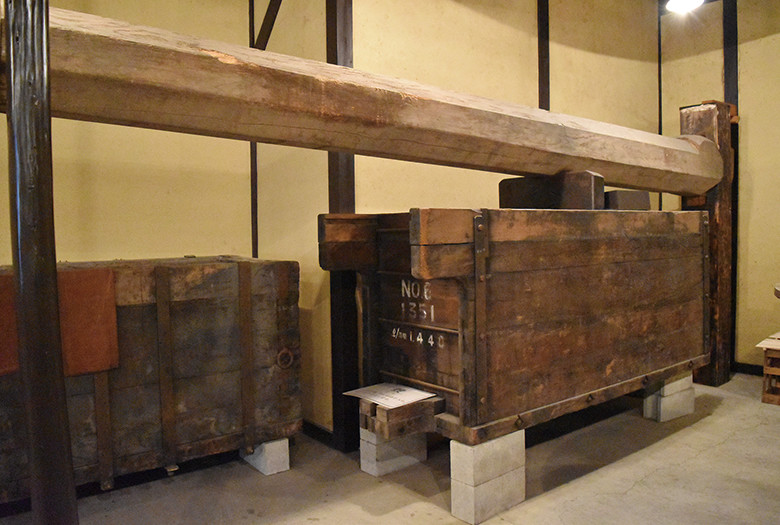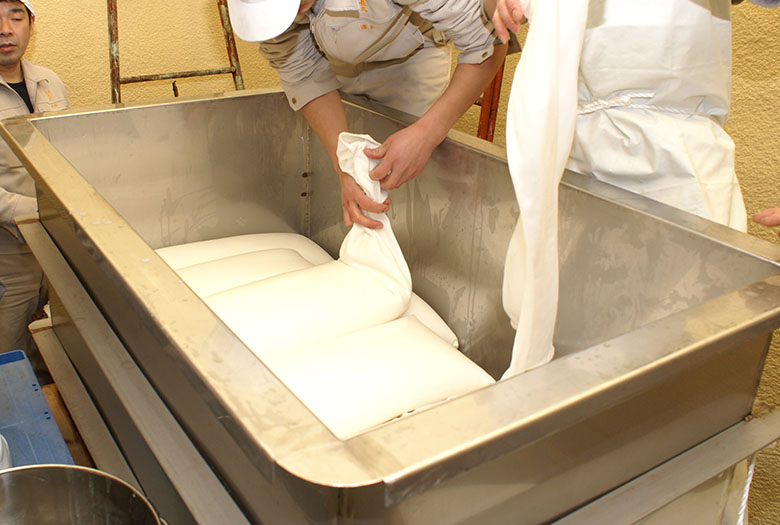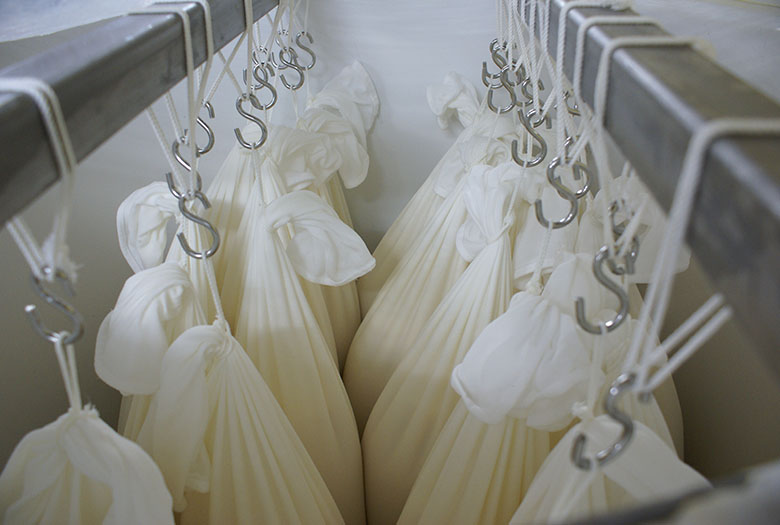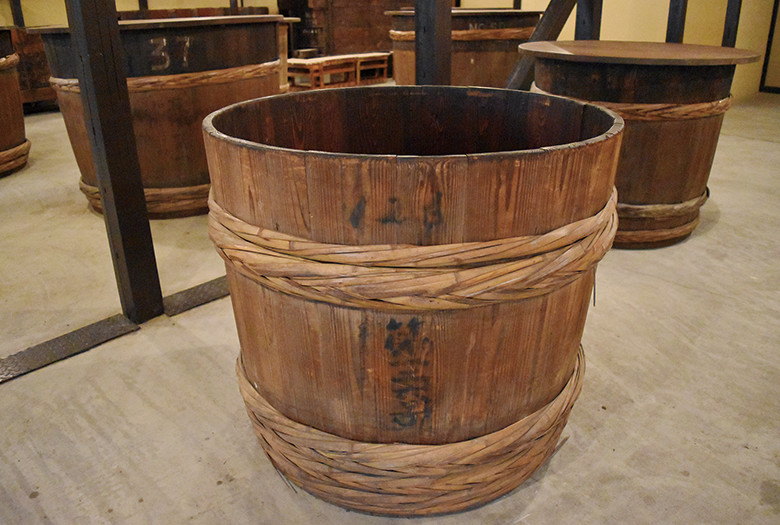- ●Press
- The press process separates the sake from the sake lees in the aged mash that has completed fermentation. Japanese sake is generally passed through an automatic press to achieve this, but types of sake like daiginjo, junmai daiginjo, and shuppinshu undergo one of two time-intensive methods to extract the natural flavor of Japanese sake without mingling of any other flavors. One is fukurozuri in which the mash is placed in sake sacks and hung up, allowing the sake to drip out naturally without the application of pressure. The other is funeshibori in which sake sacks holding the mash are placed in a large box called a fune (boat) and the sake is pressed out with pressure from above.
- ●Hanekishibori
-
This is a method of pressing sake with pressure that applies lever principles.
A huge tree trunk (about 8 m long) is strung from the ceiling and the weight and lever principles are used to apply pressure and press out the sake.
In this traditional method, sacks are filled with mash that is the step before achieving sake and placed in a large box called a fune (boat), and then a lid is placed on top and pressure is applied with a large tree trunk to press the lid.

- ●Funeshibori
-
This is a traditional method of pressing sake.
Sacks that are about 50 cm large are filled with mash and pressure is applied from above to press out the sake.
The box in which the sacks are placed is shaped like the bottom of a boat, giving this method its name, funeshobori, meaning ‘boat pressing.’
Although the pressing takes time, the extra labor lets you enjoy the natural flavor of Japanese sake without the mingling of other flavors.

- ●Fukurozuri (shizukutori)
-
This is the method used to press daiginjo.
Sacks are filled with mash and hung up, allowing the sake to drip out naturally without the application of pressure. Although this labor-intensive method produces less sake than methods that use pressure to physically press out the sake, the rice grains left over are not crushed, so you can extract a pure flavor without the mingling of other flavors.

- ●Pressing with an automatic press
-
This is the most common method for pressing sake used by breweries in Japan.
The automatic press is shaped like an accordion, and a bellows-shaped filter plate is used to press the mash.
As this method of pressing requires little time, it inhibits oxidation and maintains a stable aroma and flavor.
- ●Cedar casks
-
Japanese sake was originally prepared in pots or earthenware jars, and the arrival of casks enabled mass production. Casks have a longer lifetime, and new casks were used for 20 to 30 years as sake casks. When they could no longer be used in that role, they were bought by a miso or soy sauce producer and used for another 20 to 150 years. Today, stainless steel tanks are used for easy storage.
Cedar casks were originally used for all the steps from preparation to storage, but labor and temperature control were difficult. Nowadays, enamel or stainless steel tanks are commonly used as temperature can be controlled easily, and the activity of microorganisms can be adjusted.

- Top page
- Press machine・Cedar casks
